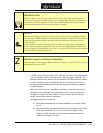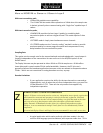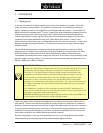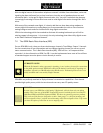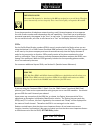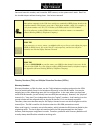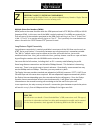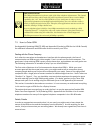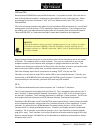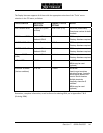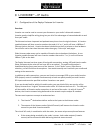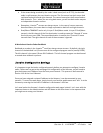
USER’S MANUAL
Section 7: ISDN BASICS 137
Z
ZEPHYR CLASSIC VS XSTREAM COMPARISON!
Most versions of the Zephyr Classic can operate without Directory Numbers. Zephyr Xstream
requires the DNs be present to receive incoming calls.
MultipleSubscriberNumbers(MSNs)
MSNsperformthesamefunctionwhentheISDNprotocolusedisETS300(EuroISDN)orINS64
(JapaneseISDN).Inthiscase,useoftheMSNisentirelyoptional.IfnoMSNsareentered,the
firstcalltoanyofthenumbersassociatedtotheISDNcir
cuitwillringinas“line1”ifthat“line”
isidle.If“line1”isinusethecallwillringinon“line2”.Thisispreciselythesamebehavioras
whenalinewiththe“AT&TCustomPTP”protocolisused.
Long-Distance Digital Connectivity
Long‐distanceconnectivityisroutinelyavailableinmostpartsoftheUSAfro
mcarrierssuchas
AT&T,Sprint,andVerizon.Connectivitybetweenanytwogivenpointsissomewhatvariable.
The“dial1+”defaultcarriermaybechosenatthetimeyouordertheline,justaswith
traditionalvoicelines.Also,justaswithvoicelines,youmaycho
oseacarrieronaper‐callbasis
byprefixingthenumberwiththe1010XXXcarrierselectioncode.
Youmustdialthefullnumber,includingthe1or011+countrycodefollowingtheprefix.
Somelong‐distanceconnectionsarelimitedto56kbps/channel.Thislimitationisbecoming
morerare.Th
ereisnocertainwaytoknowinadvance.Occasionally,someconnectionsmay
workat64Kbpsandnot56Kbps.Therefore,youmayneedtotryboth.
TheZephyrXstreamprovidesstandardrateadaptation(officiallyknownas‘CCITTV.110’)from
56to64kbpsandviceversawhenrequired.Bitrateadaptationh
appensautomaticallywithin
theZephyrXstreamdependingupontherateselectedbythecallingparty.SincetheZephyr
Xstreamcannotcommunicateatbothratessimultaneously,itwillignorerateadaptation
informationonthesecondincomingcallremainingattheratesetforthepriorcall.
Inourexperience,theonlysurewaytoknowifaconnectiongive
nbetweentoparticularpoints
willworkistotryit,firstat64kbpsandthenat56kbpsifthehigherratefails.
i
ISDN TIP!
Not all carriers can handle “Circuit Switched Data” (CSD) connections at all. This type of
connection is what makes real-time low-delay audio transmission possible, and is required.
For the latest information, check Appendix 10 (Ordering ISDN in the USA & Canada).



